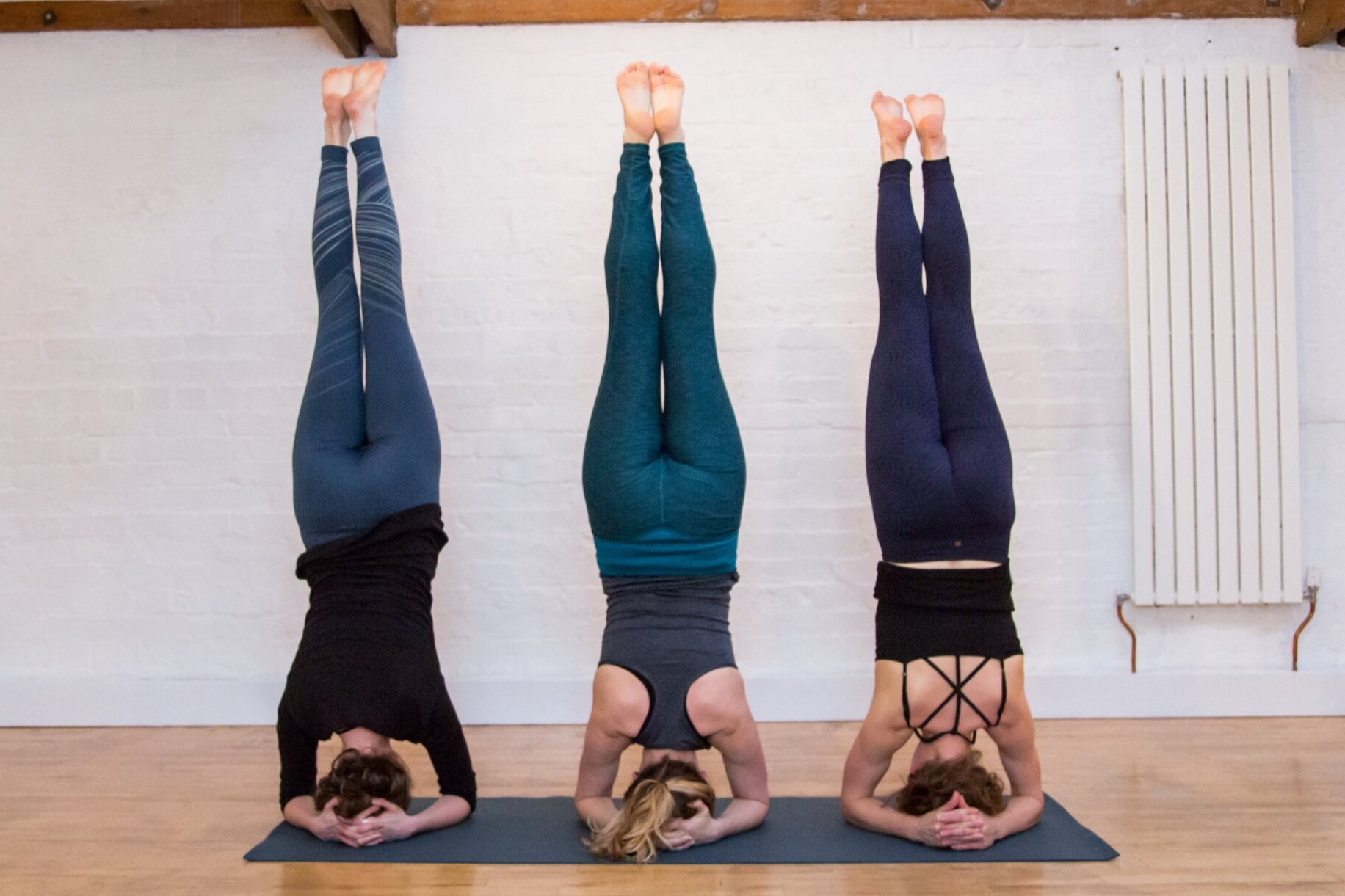Can I Practice Inversion During My Period? Yogis versus Science
The traditional way of thinking about periods is likely to have been influenced by the patriarchal culture that we live in and that yoga developed in. But science shows us there is nothing in terms of potential strength and power to prevent us working hard during our period if we want to.
We can harness the power of our cycle to work in accordance with the needs of our body and feel into what works for us, free from any external rules and regulations.
On the other hand, if we want to feel the more subtle power and energy of the prana vayus then we may find we prefer the traditional approach of working more gently when, and if, the body feels more heavy around the time of our periods.
During menstruation, the body sheds and releases the lining of the uterus in a downward flow. Women are often warned not to invert during their period as blood could flow in the opposite direction and “retrograde menstruation” could occur, leading to endometriosis. Science shows us that the natural downward flow of the uterus lining during menstruation will not reverse direction if you invert. Menstrual blood is expelled from the uterus through uterine contractions. These contractions are not affected by gravity or changes in body position.
Of course everyone is different and each period is different. So ultimately trusting and believing in one’s own body is best. And facilitating ourselves and our students to be empowered is always going to be the safest option.
Below we have outlined what a traditional yoga asana schedule may have recommended during menstruation versus the latest scientific findings.
Traditional Yoga Asana
Apana, the downward force of prana, needs to be allowed to flow freely. Philosophically, in yoga, menstruation is considered to be apana, meaning your body’s energy is downward-flowing. Those against inversions say that the poses will disturb the natural energetic flow. The body and uterus are under pressure during menstruation so we should rest more.
During your period (Days 1*-5):
Avoid any pressure on the uterus, such as inversions, strong backbends and deep twists. Include restorative, gentle poses, cooling and calming practices.
After your period (Days 6-14)
Include extra twists and inversions to tone the uterine area.
Mid to late cycle (Days 15-28)
Work as strongly as your body enjoys.
*Day 1= start of the period
Scientific Research
Hormone levels mean you are faster and stronger during your period and immediately after, meaning you may be able to lift your body weight and exert yourself more effectively. The week before your period is when you may find you are not feeling as strong.
During & after your period (Days 1*-12+)
Testosterone hormones are high and muscles are able to fire most effectively. You have a higher pain tolerance and may experience higher perceived energy levels. Due to this your body can reach its greatest power now and is primed for high intensity workouts, although performance may be hampered by cramps, pain, etc.
Mid cycle (Days 13-19)
You are capable of greater strength and endurance, meaning stronger poses and practices may come more readily, plus you have the stamina to go for longer.
Late cycle (Days 20-28)
Your body has more oestrogen and progesterone. This time is great to work on mobility and recovery type practices rather than trying to reach your physical peak. Premenstrual syndrome may interfere with training and performance 7-10 days before you start your period.
*Day 1= start of the period
Conclusion
Everybody and every period is different meaning we don’t need to assert ‘rules’. Some people feel energetic during their period whilst others want to take it easy. A balanced practice, with ease and effort is always a good plan, but it doesn’t have to tie in with ovulation and your period. Although tracking your period may help you identify patterns in energy and strength and help you tailor your practice to your body’s needs.
Scientific research taken from article below:
https://www.miun.se/en/Research/research-centers/swsrc/news/2019-2/the-menstrual-cycle-and-female-athletic-performance/

